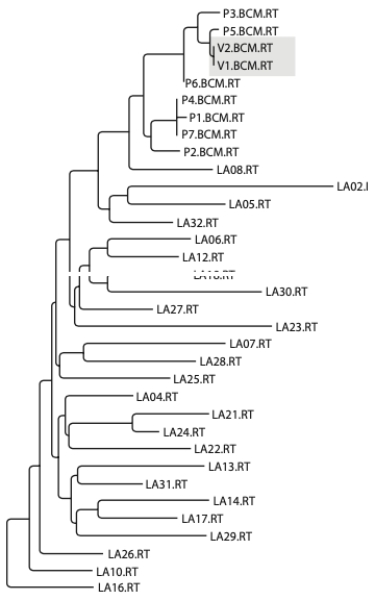Not Answered
This is a true story. A gastroenterologist from Lafayette, LA was accused of infecting his girlfriend with HIV by injecting her with a syringe containing HIV-infected blood from one of his patients. The victim (the girlfriend) claimed that the doctor injected her during an argument. However, the victim was also a nurse and so conceivably may have had contact with HIV-infected blood through her job. Given below is a phylogenetic tree constructed using HIV sequences from the victim (denoted with a V in the label), HIV sequences from the patient whose blood was allegedly in the syringe that the doctor injected into the victim (denoted by a P in the label), and HIV sequences representing much of the diversity of HIV strains from the Lafayette area during the time of the incident (denoted by LA in the label). Is the tree consistent with the prosecution's case that the doctor injected the victim with HIV-infected blood from his patient? Why or why not? 
Correct Answer:

Verified
Correct Answer:
Verified
Q55: Which of the following is not a
Q56: BRCA1, Brca1, brca1, and PIGBRCA1 are examples
Q57: Alleles that share a genealogical lineage in
Q58: Which of the following statements is not
Q59: In 2002, Trask et al. published a
Q60: Which of the following is/are (a) pitfall(s)
Q61: Which of the following scenarios would be
Q62: If the size of a population increases
Q63: A free-living bacterium unrestricted by a host
Q64: Which bacterial niche is likely to favor